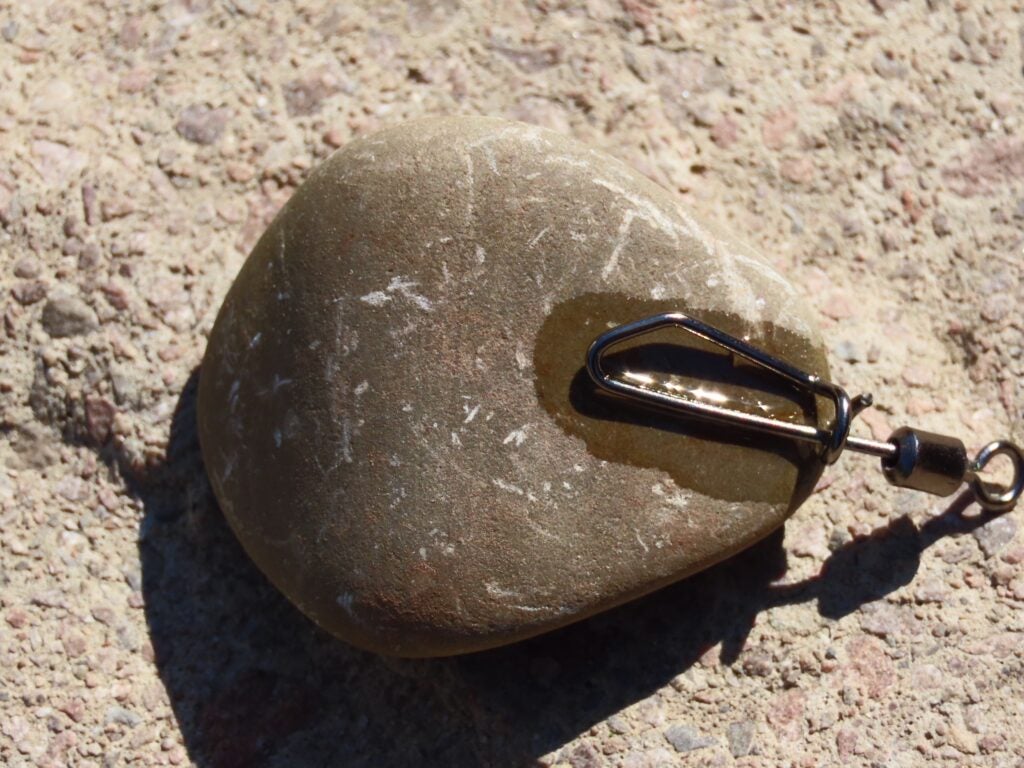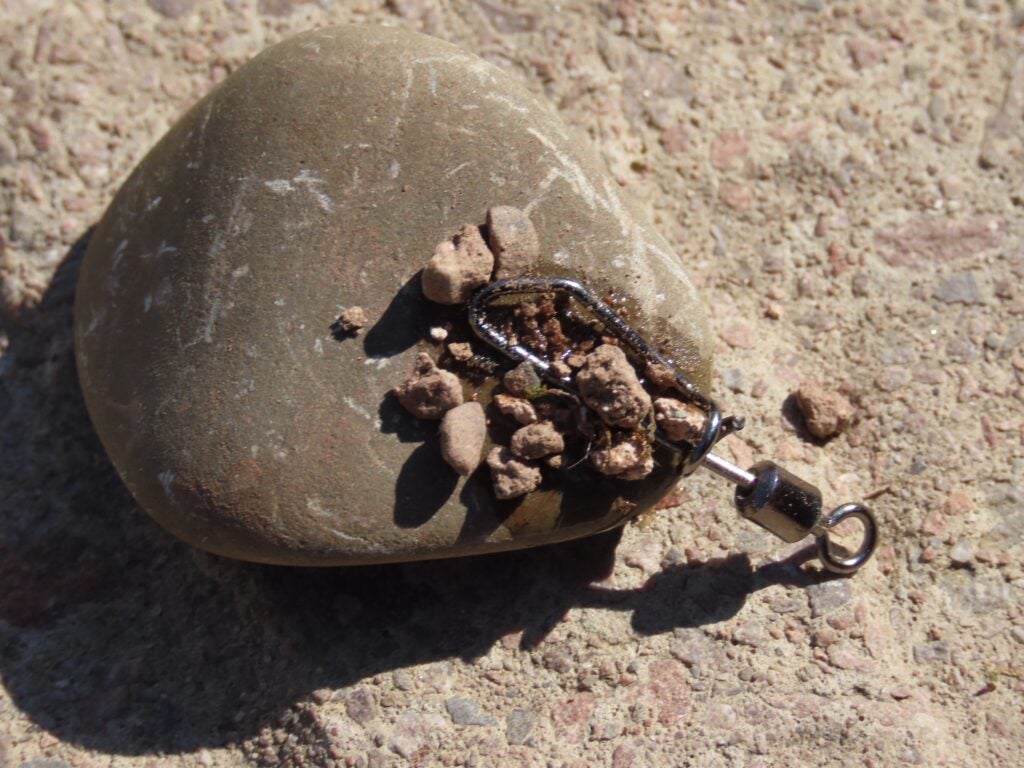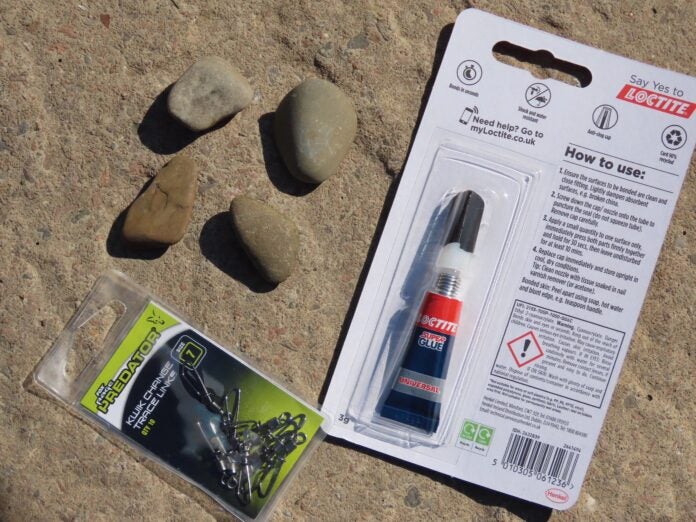The photos say it all really. How to create a weight for river barbel and chub (and stillwater fish come to that) from nothing but snap links, glue, and the stones from the river bed or bank.
First, I have written about this before, but a good while ago so it bears repeating now. Second, it was the great Rob Olsen’s idea initially, way back in the mid-Nineties, but I and others like Phil Humm worked on adaptations.
The actual mechanics are hugely simple. You superglue the link to a flat side of a stone, and when it is dry and fixed, you can attach the line through the swivel in the same way as you would a feeder or lead. The advantages are enormous…




- These stone weights are all but free, just the cost of the snap links and the glue.
- Virtually 100% sustainable.
- In clear water, educated river fish shy away from feeders and leads, which are obvious to them and spell danger. What fish is going to be afraid of a stone, when it lives all its life above millions of them?
- If you are worried about the flash of the link glued to the stone, sprinkle sand on it as it dries, to hide it altogether.
- You can get away with a lighter stone than you can a lead or feeder. The stone has been moulded by the current for millennia even, and can hold bottom far easier than something made in a factory. It goes in with less splash as well.
- Perfect for the travelling, mobile angler. Don’t hamper yourself with leads. Take glue and snap links, and chose the stone you need at the swims you fish during the day.
- Most barbel especially are lost because they zig-zag along the bed, and the feeder or lead gets wedged in snags or between rocks. If a stone/weight gets caught, it breaks off the line with about two to three pounds pressure, so the fish can run free again and be played out safely. This makes the “free” stone weight a lot better than the “bought” Stonze, which cost a lot anyway.
- If a stone gets lost, so what? It’s not like leaving lumps of plastic or lead on the bed.
- The method is hugely adaptable. For example, glue the line and eye of the hook to a long stone, and let the bend of the hook with bait and hair remain free. An ultimate bolt rig when you get it right.
- A great idea to experiment with in stillwater as well as on rivers.











